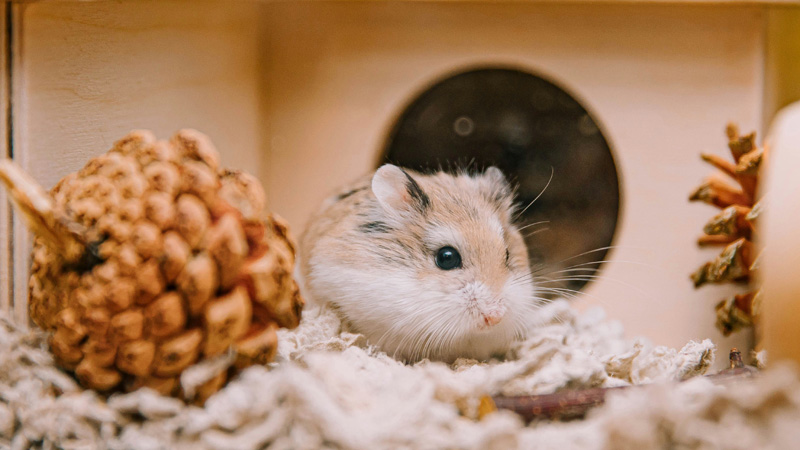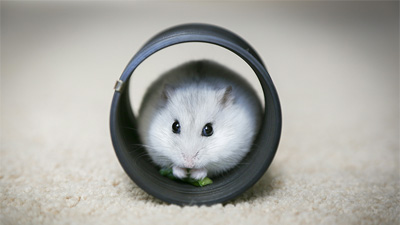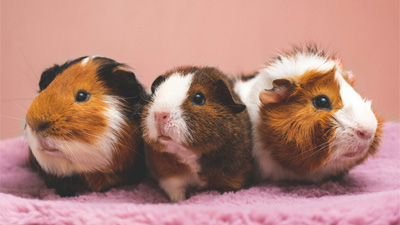Hamsters vs. Mice: What Is the Difference?

Photo by Sunira Moses on Unsplash
When it comes to small, furry pets, hamsters and mice often come to mind as popular choices. These pint-sized critters have captured the hearts of pet enthusiasts for decades, charming their way into homes with their adorable antics and compact size. While hamsters and mice may seem similar at first glance, they belong to different species and have distinct characteristics that set them apart.
In this article, we'll explore the key differences between hamsters and mice, from their physical traits to their behavior and care requirements.
Origins and Species
Hamsters and mice are both rodents, but they belong to different families and genera. Hamsters are members of the Cricetidae family and belong to the genus Cricetinae. There are several species of hamsters commonly kept as pets, including the Syrian hamster (Mesocricetus auratus), dwarf hamsters (Phodopus spp.), and Chinese hamsters (Cricetulus griseus).
On the other hand, mice are part of the family Muridae and belong to the genus Mus. The most common species of pet mice are the house mouse (Mus musculus) and the fancy mouse, which is a domesticated variety of the house mouse.
Physical Traits
Size
One of the most noticeable differences between hamsters and mice is their size. Hamsters are generally larger than mice, with an average length ranging from 4 to 7 inches (10 to 18 cm) and a weight of around 4 to 7 ounces (113 to 198 grams). On the other hand, mice are smaller, measuring about 2 to 4 inches (5 to 10 cm) in length and weighing around 0.5 to 1 ounce (14 to 28 grams).
Body Shape
Hamsters have a more robust and rounded body shape compared to mice. They have short legs and a short, stubby tail. Mice, on the other hand, have a more slender and elongated body, with longer legs and a long, thin tail.
Fur and Color
Both hamsters and mice come in various colors and fur types. Hamsters can have short or long fur, with the Syrian hamsters often displaying longer, more luxurious coats. They come in a wide range of colors, including golden, brown, black, white, and even multi-colored combinations. Mice generally have short fur, but some variations, such as the fancy mouse, can have longer, silkier fur. Mice also come in various colors, including white, black, brown, and gray.
Behavior and Temperament
Activity Levels
Hamsters are primarily nocturnal creatures, meaning they are most active during the night. They tend to sleep during the day and come alive in the evenings, displaying bursts of energy as they explore their enclosure. On the other hand, while mice are also active during the night, they are more likely to exhibit bouts of energy throughout the day as well.
Social Behavior
Hamsters are solitary animals that prefer to live alone. They often do not tolerate the presence of other hamsters in their territory and can become aggressive if housed together. On the other hand, mice are highly social animals and thrive when living with other mice. They form strong social bonds within their colony and enjoy interacting with their fellow cage mates.
Handling and Taming
Hamsters and mice have different temperaments when it comes to handling. Hamsters, especially Syrian hamsters, are generally more independent and may take longer to become comfortable with handling. They require patience and gentle, consistent handling to build trust. Mice, on the other hand, are more curious and adaptable. They tend to adjust to handling quicker and can become quite tame with regular interaction.
Exercise and Play
Both hamsters and mice require opportunities for exercise and mental stimulation. Hamsters enjoy having an exercise wheel or a hamster ball in their enclosure to burn off energy. They also benefit from having tunnels, chew toys, and hiding spots to explore. Mice, being highly active creatures, benefit from a larger enclosure equipped with platforms, tunnels, and toys to keep them entertained. They also enjoy climbing and exploring their environment.
Care Requirements
Housing
Hamsters and mice have specific housing requirements. Hamsters prefer to live in a spacious enclosure with plenty of room to burrow. A minimum size of 24 by 12 inches (61 by 30 cm) is recommended for hamsters. The cage should have solid walls to prevent escape. Mice, being highly active and agile, require a larger enclosure with plenty of floor space, including multi-level structures for climbing and exploring. A minimum size of 20 by 12 inches (51 by 30 cm) is recommended for a pair of mice.
Bedding and Substrate
Both hamsters and mice require suitable bedding or substrate in their enclosure. Hamsters prefer bedding materials that allow them to burrow, such as aspen shavings, paper-based bedding, or shredded paper. These materials should be dust-free to prevent respiratory issues. Mice also benefit from burrowing substrates, but they may prefer softer materials such as shredded tissue paper or torn-up paper towels.
Diet
Hamsters and mice have specific dietary needs. Hamsters are omnivores and require a balanced diet that consists of commercial hamster pellets as a base, supplemented with fresh vegetables, fruits, and occasional treats. They also enjoy gnawing on chew sticks to keep their teeth healthy. Mice, on the other hand, are more herbivorous. They require a diet that consists mainly of commercial mouse food, supplemented with fresh vegetables, fruits, and small amounts of protein. Mice should also have access to chew toys to maintain their dental health.
Hygiene and Cleaning
Both hamsters and mice require a clean living environment to stay healthy. Regular cleaning and maintenance, such as removing soiled bedding, cleaning food dishes, and washing water bottles, are essential. Hamsters tend to produce less waste due to their solitary nature, while mice may generate more waste due to their social behavior. Regular maintenance and cleanliness help prevent the buildup of odor and maintain overall hygiene.
Suitability as Pets
Bonding and Interaction
Hamsters and mice can make good pets, but their suitability depends on individual preferences and lifestyles. Hamsters are more independent and require less daily interaction. They can be a suitable option for individuals who prefer a pet that requires less handling and social interaction. Mice, being highly social and inquisitive, enjoy interaction with their owners and cage mates. They can be an excellent choice for those seeking a more interactive and engaging pet.
Lifespan
When comparing the lifespan of hamsters and mice, it is generally observed that hamsters have a longer lifespan than mice. On average, hamsters can live for about 2-4 years, while mice typically have a lifespan of 1-3 years. It's important to note that individual lifespans can vary depending on factors such as genetics, diet, environment, and overall care.
Allergies and Sensitivities
Another consideration when choosing between hamsters and mice is potential allergies and sensitivities. Both can produce allergens, primarily in their urine and dander. Some individuals with allergies may be more sensitive to hamsters or mice, and it's important to spend time with both species to determine individual reactions before making a commitment.
Conclusion
In summary, while hamsters and mice are both small pets, they have distinct differences in terms of physical traits, behavior, care requirements, and suitability as pets. Hamsters are generally larger, have a more rounded body shape, and prefer solitary living. Mice are smaller, have a slender body shape, and thrive in social groups. Hamsters require spacious enclosures that allow for burrowing, while mice benefit from larger enclosures with ample floor space and climbing structures. Their interaction and handling preferences also differ, with hamsters needing more time to become comfortable with handling compared to mice. Both hamsters and mice have specific dietary needs and require regular maintenance to ensure a clean living environment. Ultimately, the choice between hamsters and mice as pets depends on individual preferences, lifestyle, and the ability to provide the appropriate care for each species.
You May Also Like
 Pet HamsterIs a Hamster a Type of Rat? Debunking the Myth
Pet HamsterIs a Hamster a Type of Rat? Debunking the Myth Pet HamsterWhich Type of Hamster is the Friendliest?
Pet HamsterWhich Type of Hamster is the Friendliest? Pet HamsterCan Hamsters Spread Diseases to Humans?
Pet HamsterCan Hamsters Spread Diseases to Humans? Pet HamsterCan a Kid Be Allergic to a Hamster?
Pet HamsterCan a Kid Be Allergic to a Hamster? Pet HamsterIs It Better to Have 2 Hamsters or 1?
Pet HamsterIs It Better to Have 2 Hamsters or 1? Pet RatsExploring the 7 Different Types of Pet Rats
Pet RatsExploring the 7 Different Types of Pet Rats